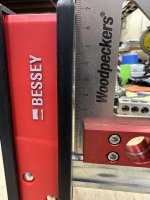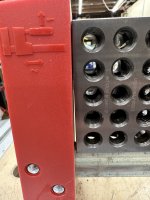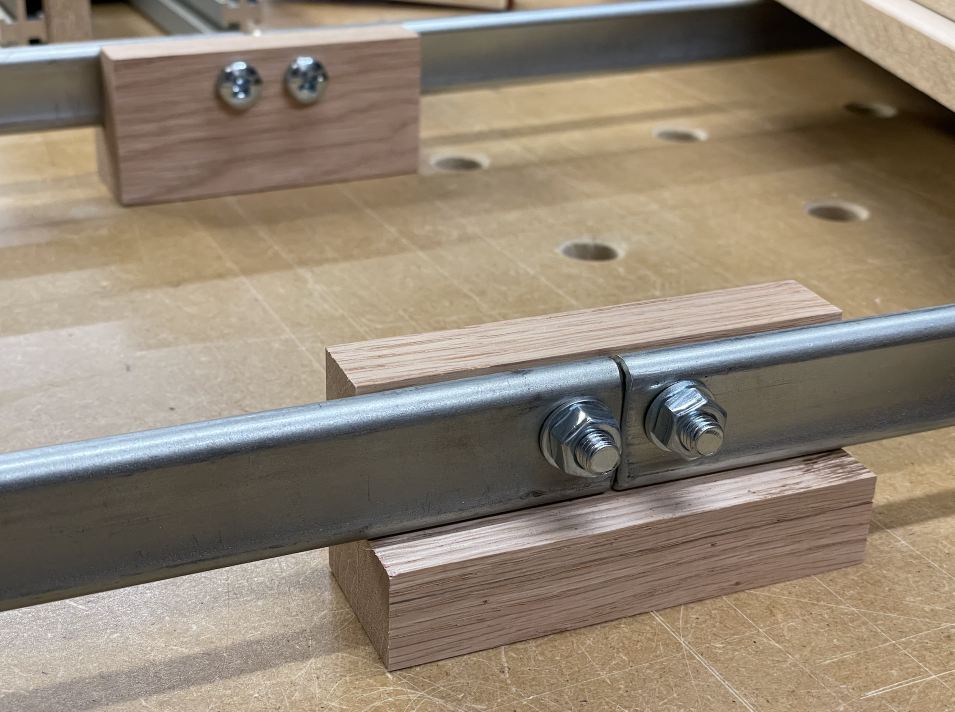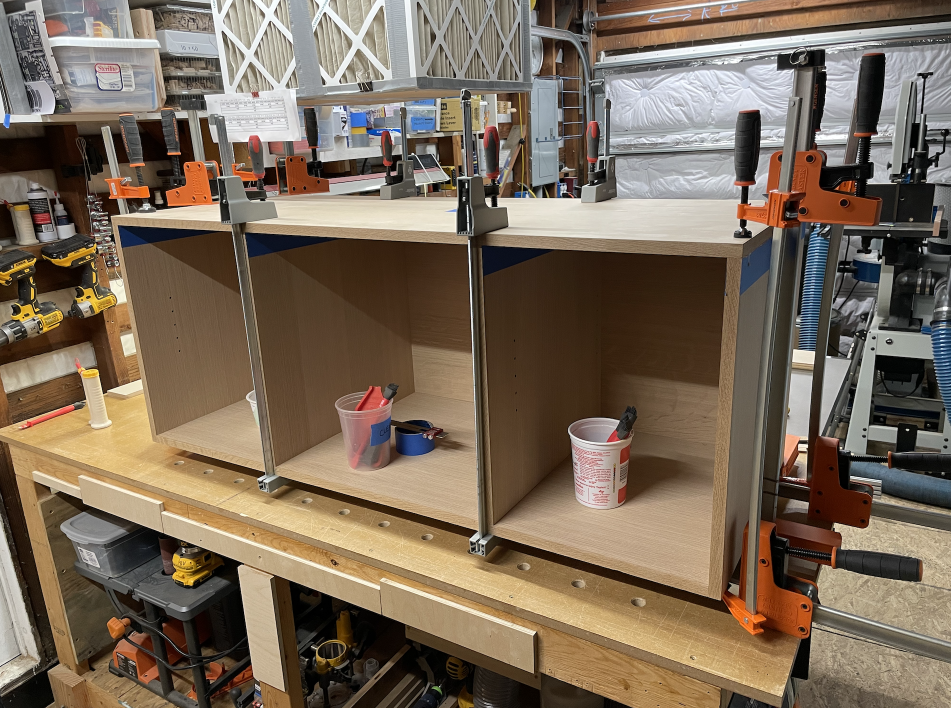4nthony
Member
If you're buying Jorgensen clamps, be sure to check the squareness of the head as sometimes they're perfect, sometimes they're way off.
It's been awhile since I've done a cabinet glue-up and I was reminded with how frustrated I am with my Jorgensen Cabinet Master clamps.
The majority of them are just not square at the head.

I added a shim to put pressure at the joint and not throw my side panel out of square while under pressure.

I bought these when they went on sale at the local Big Box and noticed how off they were months later after the receipt was long gone.
Shoulda bought Bessey... [oops]
It's been awhile since I've done a cabinet glue-up and I was reminded with how frustrated I am with my Jorgensen Cabinet Master clamps.
The majority of them are just not square at the head.

I added a shim to put pressure at the joint and not throw my side panel out of square while under pressure.

I bought these when they went on sale at the local Big Box and noticed how off they were months later after the receipt was long gone.
Shoulda bought Bessey... [oops]









